by Texas Homesteader ~
Our homestead is located in Northeast Texas. There are lots of native things growing all by themselves here that provide for us with no effort needed except the harvesting. Gotta love foraging for free food, right??
Foraging Safety
Recently I was chatting with a friend about various things we’re foraging from our land. She was surprised there were so many foraging options. So I thought it might be fun to share these with your too.
Common-sense disclaimer – always know what you’re foraging to eat. If you’re not absolutely sure have your extension agent help identify the plant for you. If you’re still not sure, pass it by.
For instance – I’d love to be able to forage mushrooms. But I’m just not comfortable with it. So although I’m virtually certain there are lots of safe edible mushrooms on our property, I pass them by. (maybe someday…)
Honeysuckle Harvested In April/May
Aaaaahhhh, honeysuckle. That sweet memory of childhood when you’d seek out those fragrant honeysuckle blooms, remove the tip and suck on the hollow flower to get that drop of sweet nectar!
I harvest those sweet blossoms and make Honeysuckle Jelly out of them.
Dewberries Harvested In May
Dewberries are very similar to blackberries and they grow wild here.
Those sweet berries grow on a ground-trailing vine covered with tiny slender thorns. They’re considered a nuisance plant for cattlemen’s pastures.
But we allow a patch of dewberries to grow in a back section for me to harvest when those berries are ripened to perfection, juicy & sweet.
I’ll harvest, wash, air dry and then freeze them. When I’m ready to make Blackberry Cobbler they’re ready to be used.
Chickasaw Plums Harvested In June/July
The early spring plum blossoms delight our honeybees and give them a jumpstart on honey production. And these trees are pretty and produce plentiful albeit small plums.
Our Chickasaw plums ripen earlier in the year than our other wild plums on our property (Mexican plums, see below).
These Chickasaw plums are small cherry-sized plums, but to me they’re not quite as sweet as the Mexican plums. So I sometimes enjoy them raw but reserve jelly-making to the Mexican Plums.
Jujubes Harvested In August
Our remote pasture has a cluster of Jujube Trees, also known as Chinese Dates. They’re located at an old homestead site, long-gone for decades now. I suppose these jujube trees just grew into a thicket with all the dropped fruit.
Jujube fruit is about the size of a large olive & incredibly sweet. Jujubes turn from green to dark red when they ripen.
I harvest and Dry The Jujubes, then include them as a natural sweetener for my Pumpkin Granola.
Elephant Garlic Harvested In July/August
I hesitated to include this one in the list since it was obviously planted. But in an offsite pasture where an old homestead stood decades ago are several clumps of elephant garlic.
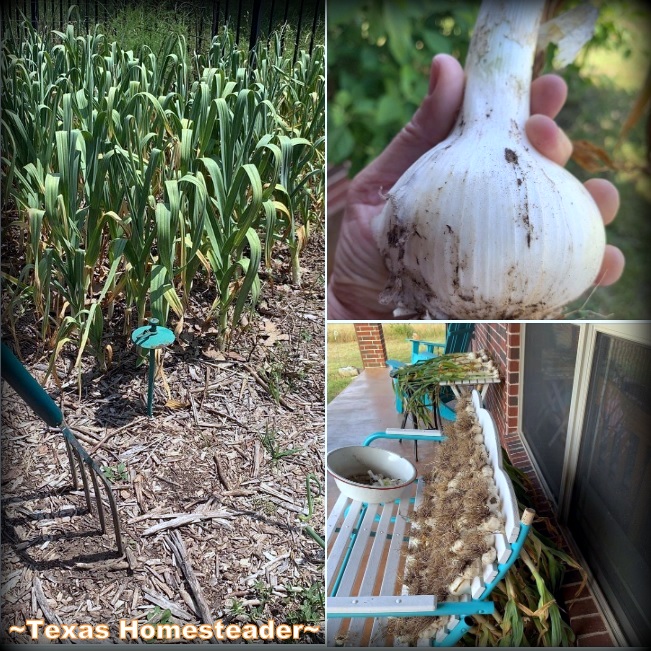
We didn’t plant it nor do we ever maintain it. But I’m happy to harvest from it every year!
Mexican Plums Harvested In August/September
Mexican Plum Trees are scattered throughout our property. These plums are my favorites.
I harvest as many as I can and often freeze the fruits or puree for making jelly when the heat of a Texas summer breaks.
These small plums make the most flavorful Lazy-Cook’s Plum Jelly you ever tasted, and without added pectin.
Persimmons Harvested In October
We also have several persimmon trees. Like most native trees the fruit is smaller than some of the imported or hybrid varieties available today. My persimmons are large-marble sized and begin to ripen in September.
But the astringent skin & flesh will surely make you pucker if you eat them too early! I don’t even attempt to sample one until October/November when the fruit is almost smooshy.
Pecans Harvested In November
We have several small groves of various pecan tree varieties on our property. Most are the smaller yet delightfully flavorful native pecans.
But there are a couple of huge Paper Shell Pecan Trees on a back pasture as well, I assume planted decades ago from previous inhabitants.
I use pecans a LOT. In my homemade Apple Crumble, our favorite pumpkin granola, Chunky Apple Bread and more.
Soapberries Harvested In November
Although this isn’t a food, I discovered a few Western Soapberry Trees on our remote pastures.
Unlike soapnuts, Western Soapberry trees are native to North America. The trees produce a berry which contains saponin.
Native Americans and early settlers used the ‘soap’ produced from these berries for cleaning. So do I!
My favorite use is to make an all-natural and zero-waste Soapberry Shampoo. A true zero-waste treasure for sure.
Other Foraging Opportunities
Although not botanical foraging, there are other ways our beloved Homestead provides for us.
Wild Game Harvested In November Thru March
RancherMan’s an accomplished hunter and keeps our freezer filled with meat, whether wild hogs or deer. Most of the meat in our freezer is from his Harvests of Wild Hogs.
I use the delicious, mildly-flavored pork for Pork Roasts – Carnitas Tacos – Pulled Pork Enchiladas and more.
RancherMan also harvests a deer each year. My favorite way to use the venison is as a beef substitute in my Cowboy Dark Beer, Black Bean Chili.
But to be honest, both kinds of meat are almost used interchangeably with whatever I’m cooking. I’m thankful for this meat in our freezer that keeps us nourished.
Honey Locust Trees – Perfect Firewood
We have many Honey Locust Trees on our property. Those thorns will go right through a boot or even a tractor tire and can cause cattle to become lame.
But at least they have a very helpful purpose.
The spring blooms are sought after by our honeybees which results in some delightfully-flavored honey. Who knew??
And Honey Locust wood makes perfect firewood.
It burns clean with very little smoke or aroma and almost no spark. And it burns a LONG time and leaves very little ash.
Wildflowers Make Delicious Honey
The various wildflowers that grow in the pastures are not only beautiful, but provide valuable food for our honeybees.
That in turn provides us with delicious honey, which I use in much of my cooking.
Some of the cooking uses are RancherMan’s favorite Honey/Oat Sandwich Bread and my Homemade Whipped Cream, among other things.
Eating Fish From Our Pond
I’m not a big fish eater but I’ve requested that RancherMan harvest some of the bass & catfish that he catches from any of our ponds.
I know how healthy fish is in the diet and so I’m committed to attempting it. And if RancherMan’s out there fishing anyway, might as well, no??
What Do You Forage?
These are a few of the things I could think of, there could certainly be more. But I’m ever so thankful for the blessing of the foraging provisions provided for us.
Do you have things you’re able to forage where you live?
~TxH~
Links In This Post:
- Honeysuckle Jelly
- Blackberry Cobbler
- Identifying Jujube Trees
- Evidence of Past Family’s Lives
- Preserving Fresh Jujubes
- Homemade Pumpkin Granola Recipe
- Lazy-Cook’s Plum Jelly
- Simple Apple Crumble Recipe
- Chunky Apple Bread Recipe
- Identifying Soapberry Trees
- All-Natural Soapberry Shampoo
- Harvesting Wild Hogs
- Slow Cooker Pork Roast
- Carnitas Tacos Using Leftover Roast
- Planned Leftovers – Pulled Pork Enchiladas
- Cowboy Dark Beer, Black Bean Chili
- Honey Locust Trees, Useless Yet Useful!
- Harvesting Honey
- Honey/Oat Sandwich Bread Recipe
- Homemade Whipped Cream Sweetened w/Honey
- How To Tell When Watermelon Is Ripe
- Luffa A Surprising Zucchini Substitute!
MORE Gardening Posts
C’mon by & sit a spell! Come hang out at our Facebook Page. It’s like sitting in a front porch rocker with a glass of cold iced tea. Lots of good folks sharing!
You can also follow along on Pinterest, on Twitter or on Instagram.
If you’d like to receive an email each time a new blog post goes live it’s EASY to subscribe to our blog!

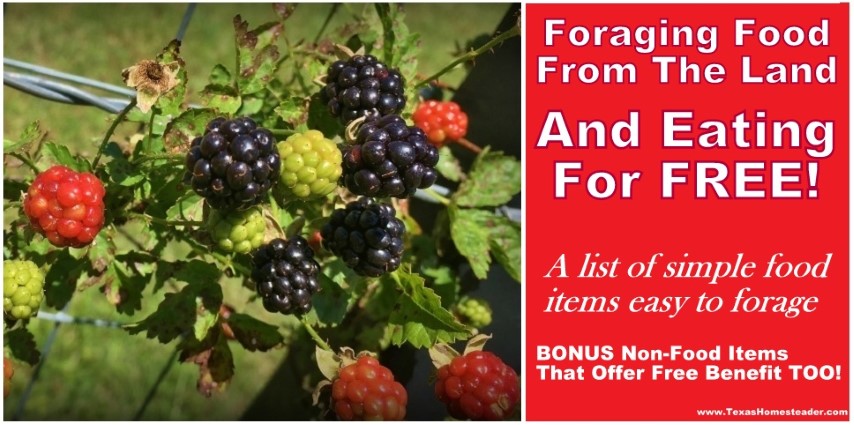
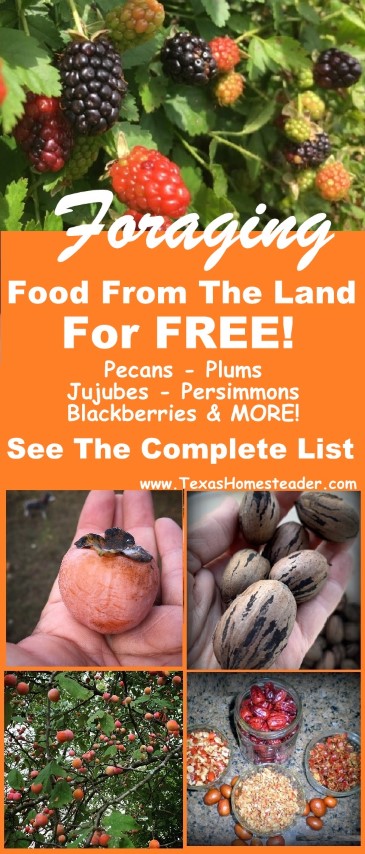
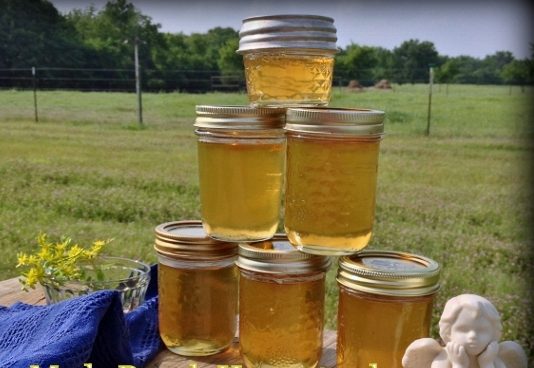
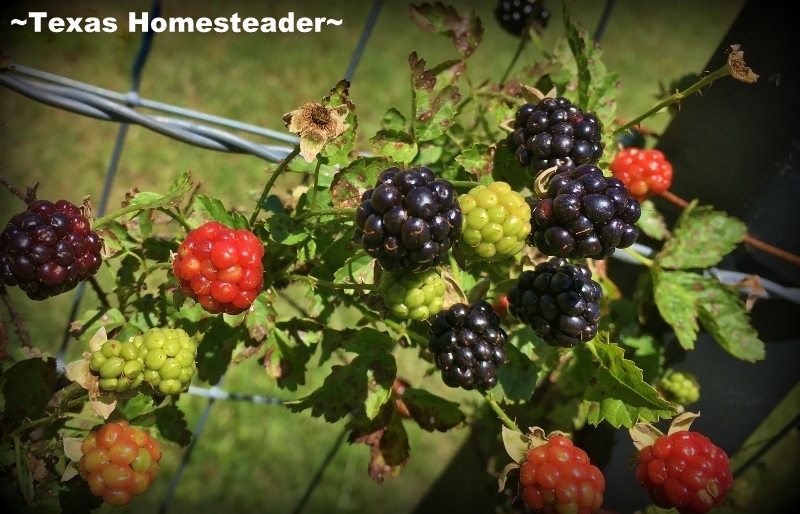
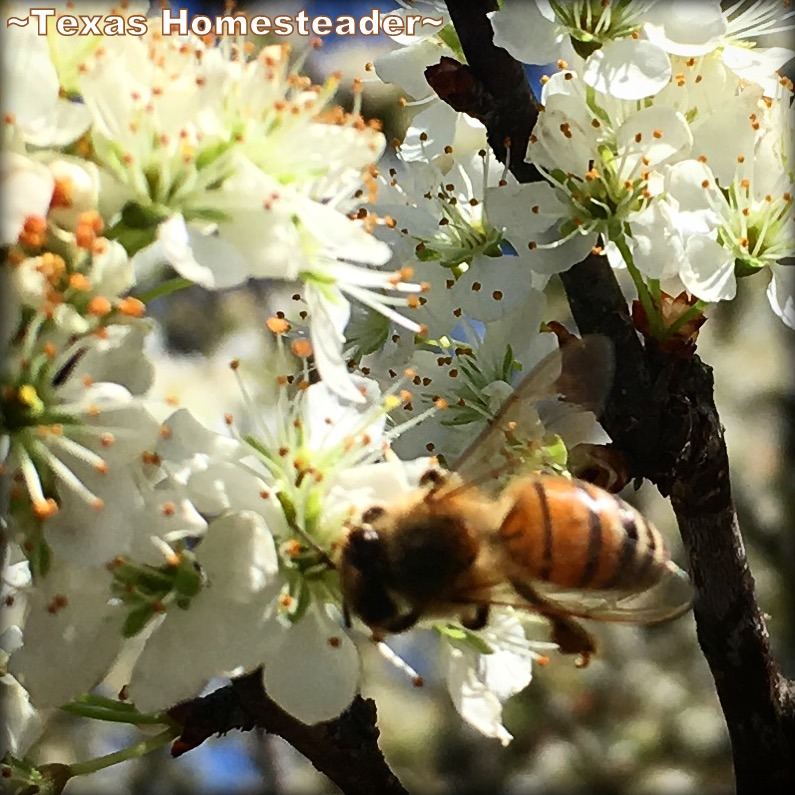
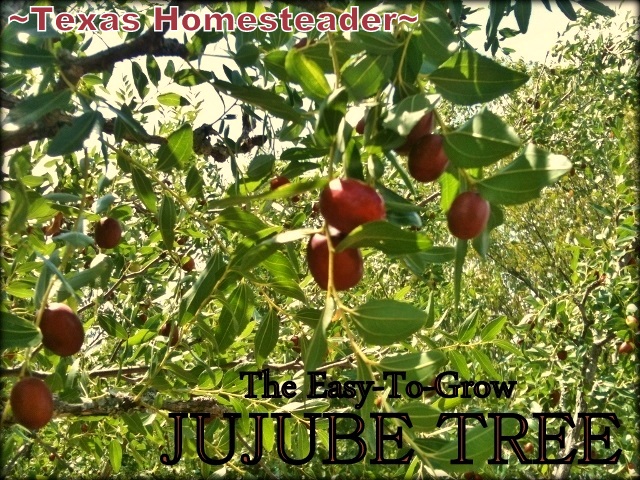
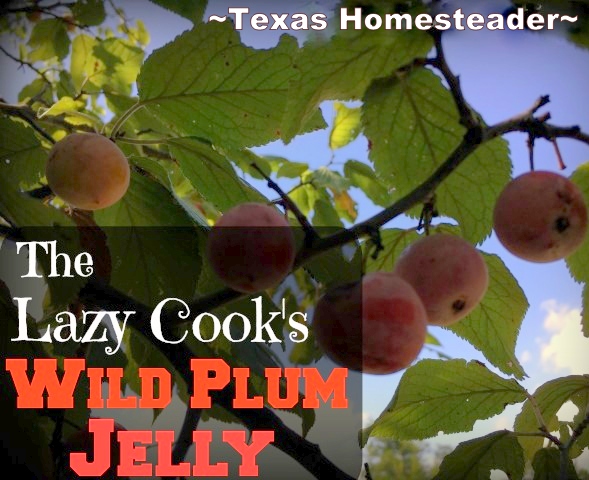
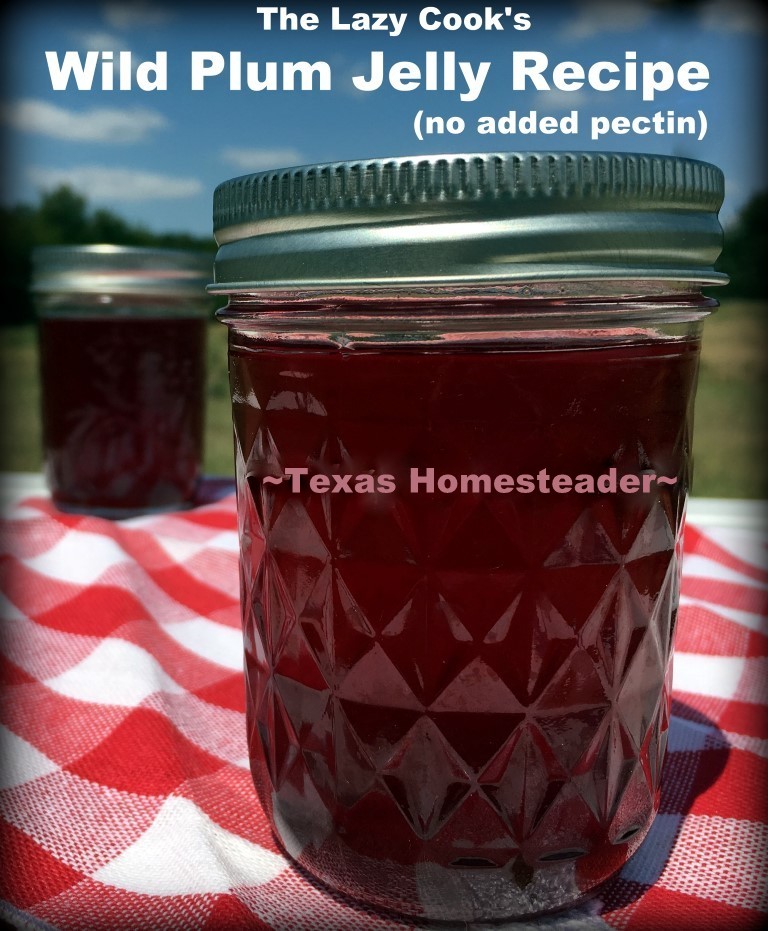
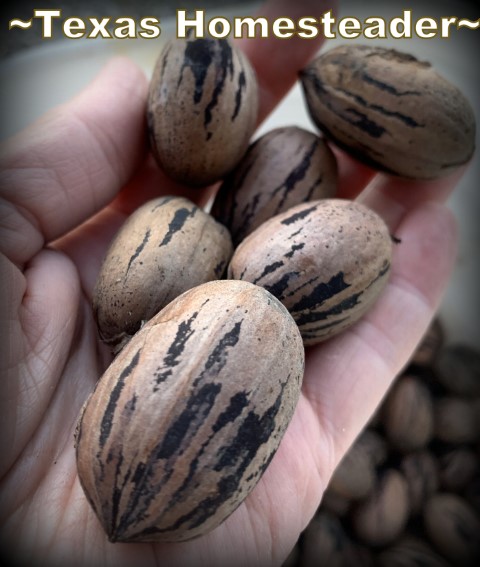
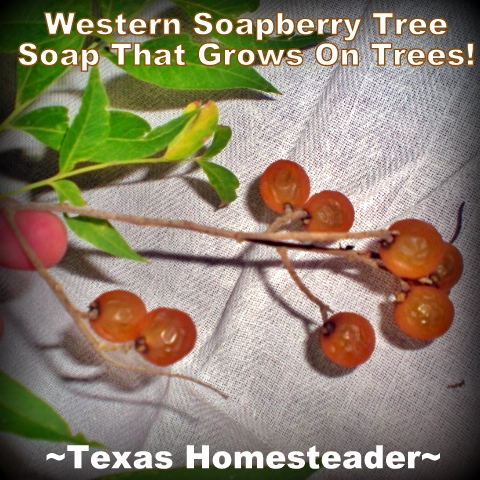
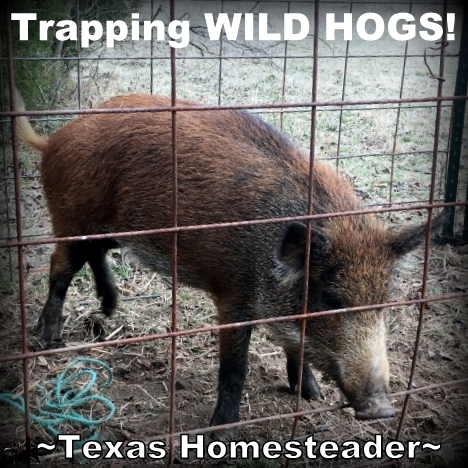


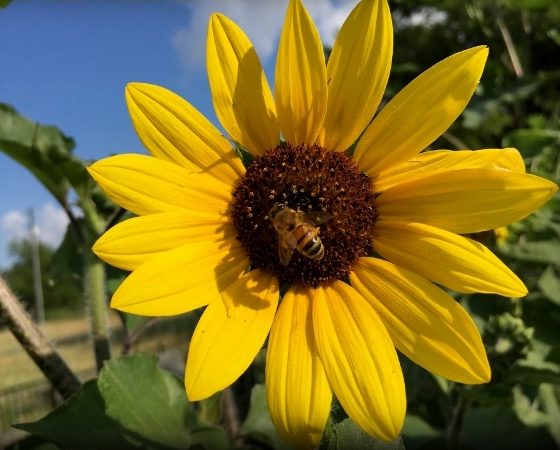
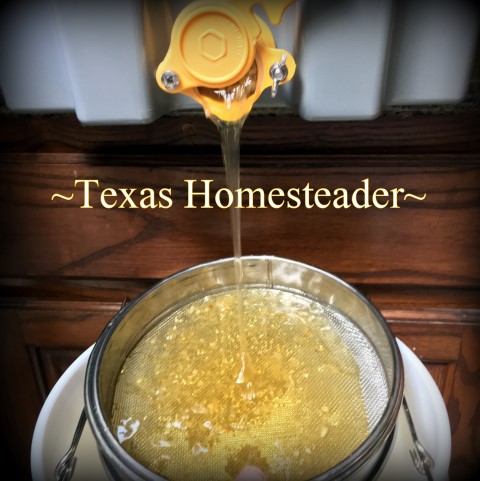



Hello Hello,
Regarding foraging for wild food, the main thing we have wild and hugely available are blackberries. There are three kinds in this area. I’m not sure any of them are native. the best for jelly or juice are the Himalayas. They are big, quite sweet and pretty seedy. The primo berry for pies are the little vining type. My mother always used to say they tasted like battery acid. I’m not really sure that she ever actually tasted battery acid, but with sugar and a bit of flour in a pie crust it is food for the gods. The bird man who lives with me planted a mislabeled berry in our fenced garden area years ago. Thinking they were seedless only to find out that they are thorn less – I love that. They are big, sweet and juicy. There is one other variety but the berries are not very good, and I can’t think what they are called. Keeping the blackberries “at bay” and out of the pasture is always a challenge. The neighbor who cuts and bales our field gives the berry vines a run at when he is here dragging the field before mowing. Living in the country, you just can’t beat it!!!
“Tasted like battery acid” – HA! Candace your sense of humor is always on-point! I’m super-duper jealous of your thornless blackberries. I’ve heard of these beauties but have never grown them. I’m thinking perhaps I need to change that. Thornless would be delightful. ~TxH~